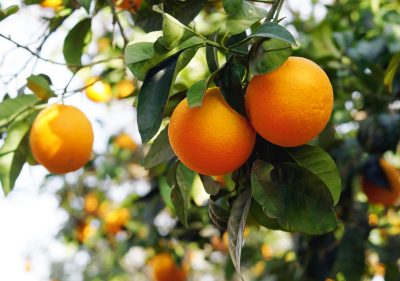
By Kaitlin Washburn
The Citrus Pest and Disease Prevention Committee (an advisory body to CDFA and citrus growers) has endorsed a set of best practices on how to combat huanglongbing (HLB), a disease that devastates citrus orchards.
The recommendations were developed by growers from throughout California and scientists to thwart the spread of the Asian citrus psyllid, the pest that carries HLB, or citrus greening disease.
“Our state’s citrus industry has held the line against HLB since the first detection seven years ago. We should commend our efforts but must not forget the devastating impact HLB could have on our orchards and our livelihood,” said Jim Gorden, chair of the Citrus Pest and Disease Prevention Program and a Tulare County citrus grower, in a news release from the committee.
HLB has yet to be detected in a commercial grove in California, though the disease is spreading through residential communities in Los Angeles, Orange and Riverside counties, according to the California Department of Food and Agriculture (CDFA).
Citrus greening disease has infected more than 1,400 citrus trees, and 1,003 square miles are under quarantine for HLB, according to the committee’s release. Trees infected with the disease bear small, asymmetrical fruit that are partially green, bitter and unsellable.
The Asian citrus psyllid, a spotted brown insect smaller than a grain of rice, has been found in 28 California counties, including Tulare. Growers can voluntarily follow the practices, which are a supplement to CDFA’s required action plan on targeting HLB and the Asian citrus psyllid.
The practices for combating HLB offer four scenarios a citrus grower might experience. The four possibilities are if a grower’s orchards are outside of an HLB quarantine, between 1 and 5 miles from HLB detection, within 1 mile of HLB but not infected or infected with HLB.
The guidelines vary within each scenario and offer actions a grower can take, such as surveying for Asian citrus psyllid in their orchard, controlling Asian citrus psyllid with insecticides and repellents and providing additional protections for young trees.
HLB wasn’t detected in the Western Hemisphere until 2004 when it was reported in Brazil. In 2005, HLB was detected for the first time in the United States, in Florida. Before that, it was known to occur in Asia, specifically from Japan to southern China, Southeast Asia and from India to Pakistan.
“We know the cost to manage the Asian citrus psyllid is far less than any potential costs or loss to the industry should HLB take hold throughout our state,” said Keith Watkins, chair of the task force that developed the best practices and vice president of farming at Bee Sweet Citrus, in the release.
For the 2016-2017 marketing year, California citrus production valued $3.4 billion. The total economic impact of the citrus industry on California’s economy in 2016-2017 was $7.1 billion.
The Citrus Pest & Disease Prevention Program was established in 2010 to advise the CDFA secretary and agricultural industry about efforts to combat serious citrus pests and diseases.


